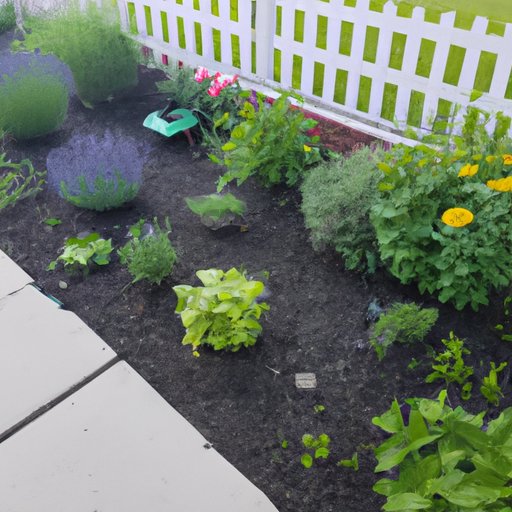Introduction
Hostas are a type of perennial plant that is popular in gardens. They come in many different shapes, sizes, and colors and can provide an attractive addition to any garden. Unfortunately, they are also a favorite snack of deer, which can cause significant damage to a garden if left unchecked.

Install a Fence Around the Hostas
One of the best ways to keep deer away from hostas is to install a fence around them. A fence can be a simple wire mesh or a more elaborate wooden structure. The most important factor is that it should be tall enough to keep deer out (at least 8 feet) and have no gaps that a deer could fit through. Additionally, the fence should be securely fastened to the ground so that deer cannot push it over or dig underneath it.
Wire mesh fences are relatively inexpensive and easy to install. However, they may not be aesthetically pleasing. Wooden fences can be more attractive but are more expensive and require more time and effort to construct. In either case, it is important to make sure that the fence is strong enough to withstand the weight of a deer pushing against it.
Spray the Hostas With a Deer-Repellent Solution
Another way to keep deer away from hostas is to spray them with a deer-repellent solution. There are many different types of solutions available, including commercial products and homemade concoctions. It is important to choose a solution that is safe for plants and humans and will not harm the environment.
To apply the solution, simply mix it according to the instructions on the package and then spray it directly onto the hostas. Be sure to cover all parts of the plant, including the leaves and stems. Reapply the solution every couple of weeks or after heavy rainfall.
Plant Other Plants, Such as Lavender or Marigolds, Around the Hostas to Deter Deer
Certain plants have been shown to naturally repel deer, such as lavender and marigolds. Planting these plants around the hostas can help to deter deer from coming too close. Additionally, these plants can be attractive additions to the garden and can provide color and fragrance throughout the growing season.
These plants should be planted in soil that is well drained and rich in organic matter. They should also be watered regularly and fertilized occasionally to ensure they remain healthy. Furthermore, they should be pruned back periodically to keep them from becoming overgrown.
Hang Bars of Soap from Low Branches Near the Hostas
Hanging bars of soap from low branches near the hostas can also help to deter deer. The smell of the soap is thought to be unpleasant to deer and can help to keep them away. Any type of bar soap can be used, but it is best to choose one that has a strong scent.
To hang the soap, tie a piece of string or twine around the bar of soap and then tie the other end to a low branch near the hostas. Make sure the soap is hung at least a foot off the ground to ensure it does not become wet and ineffective. Replace the soap once a month or when it begins to lose its scent.
Use Motion-Activated Sprinklers to Scare Away Deer
Motion-activated sprinklers are another effective way to keep deer away from hostas. These devices are triggered by movement, such as a deer walking past them, and emit a sudden burst of water. This startles the deer and encourages them to stay away.
Setting up a motion-activated sprinkler system is relatively simple. Simply attach the sprinkler heads to a hose and then position them around the hostas. Connect the sprinkler heads to a motion sensor and set the timer to your desired interval. When the motion sensor is triggered, the sprinklers will activate and scare away the deer.
Conclusion
Deer can be a serious problem for gardeners who have hostas in their yard. To keep deer away from hostas, it is important to take certain steps, such as installing a fence around the hostas, spraying them with a deer-repellent solution, planting other plants around them, hanging bars of soap from low branches near the hostas, and using motion-activated sprinklers to scare away deer. By taking these steps, gardeners can protect their hostas from deer and enjoy them for years to come.
(Note: Is this article not meeting your expectations? Do you have knowledge or insights to share? Unlock new opportunities and expand your reach by joining our authors team. Click Registration to join us and share your expertise with our readers.)
